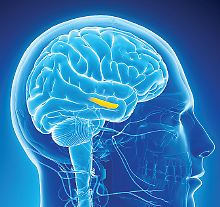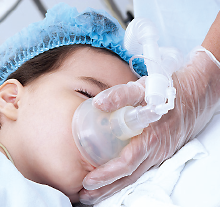Journal Digest
Hospice Care Linked to Reduced Depression in Some Surviving Spouses

Not only can hospice care improve the quality of life of patients with terminal diseases, but it also benefits patients’ spouses by reducing depressive symptoms, according to a study in JAMA Internal Medicine.
Some earlier work had shown that hospice care could improve depression in spouses of cancer patients, but this new national study expands on that to include people receiving hospice care for a range of serious diseases.
Researchers at the Icahn School of Medicine at Mount Sinai looked at data from over 1,000 deceased patients and their surviving spouses; the spouses were followed for two years after their partner’s death.
About 30 percent of the families had used hospice services for at least three days, and the researchers found that improvements in depressive symptoms were slightly more common in this group compared with nonhospice users (28 percent compared with 21 percent). Hospice use resulted in about 1.6 increased odds of improved depressive symptoms.
The authors cautioned, however, that over half of the bereaved spouses showed worsening depressive symptoms following their partner’s death and that providing additional support to families and caregivers throughout the long course of serious illness is needed.
Ornstein K, Aldridge M, Garrido M, et al. Association between hospice use and depressive symptoms in surviving spouses. JAMA Intern Med. May 26, 2015 [Epub ahead of print]
Hippocampus Holds Two Sets of Neuronal Stem Cells

The hippocampus is one of the few brain regions that generate new neurons during adulthood, producing them from a reservoir of neural stem cells (NSCs). As the hippocampus contributes to both mood and memory, researchers want to understand how one population of stem cells develops into two distinct adult neurons.
Research published in the Journal of Neuroscience has shown that the NSCs exist in two distinct subpopulations, in effect primed to mature into memory or mood neurons as needed.
The researchers treated mouse NSCs with two stimulating agents: potassium chloride and norepinephrine. They observed that each individual agent could induce a small percentage of NSCs to proliferate (29 percent for KCL and 48 percent for norepinephrine), while adding both together resulted in an additive effect (about 77 percent NSCs proliferated).
The team also identified that these different NSCs were clustered in different parts of the hippocampus, with more KCL-activated stem cells located in the temporal region and the norepinephrine-activated cells predominantly in the septal region.
With this discovery in hand, the next steps will be a more detailed characterization of these two NSC types, as well as what types of neurons the adult cells will become.
Jhaveri D, O’Keeffe I, Robinson G, et al. Purification of neural precursor cells reveals the presence of distinct, stimulus-specific subpopulations of quiescent precursors in the adult mouse hippocampus. J Neurosci. May 27, 2015; 35(21):8132-44.
Lack of Restful Sleep May Add to Alzheimer’s Damage

A research team at the University of California, Berkeley, has found evidence that a lack of deep, restful sleep may be the mechanism through which beta amyloid deposits in the brain—which are associated with Alzheimer’s disease—destroy memory and bring on dementia.
The researchers used a variety of brain scanning techniques—PET, EEG, and MRI—to visualize the brains of 26 healthy adults (aged 65 and up) during both wake and sleep periods. The volunteers were tasked to remember a series of word pairs, and they were tested both shortly afterward and following a night of sleep.
The researchers saw that the volunteers with the highest amounts of beta amyloid accumulation in a brain region called the medial frontal cortex (a key area for storing long-term memories) tended to have poorer quality sleep and perform worse on the morning memory tests.
As sleep is the critical time during which the brain can flush out toxic compounds like beta amyloid, this lack of sleep can lead to a vicious cycle of memory problems and amyloid buildup.
“But we don’t yet know which of these two factors—the bad sleep or the bad protein—initially begins this cycle,” senior author Matthew Walker, Ph.D., noted in a press release. “Which one is the finger that flicks the first domino, triggering the cascade?”
This study was published in Nature Neuroscience.
Mander B, Marks S, Vogel J, et al. Beta-amyloid disrupts human NREM slow waves and related hippocampus-dependent memory consolidation. Nat Neurosci. June 1, 2015 [Epub ahead of print].
Methadone Therapy in Prison Helps Maintain Post-Release Usage

Inmates who stop taking methadone upon incarceration were much less likely to return to this therapy once they were released from prison.
These findings, appearing in The Lancet, could have implications for U.S. prison policy, as most people undergoing methadone maintenance treatment (MMT) for opioid addictions will be forced off once they are incarcerated.
The study involved 223 people incarcerated in Rhode Island for six months or less; 114 were allowed to continue their MMT, while the remaining 109 were phased off, per state requirements. Upon release, all the participants were offered assistance in resuming MMT.
Ninety-seven percent of those who had MMT in prison came to a methadone clinic within a month after their release, compared with 71 percent of people who had been weaned off MMT.
The authors noted that because the study participants had short sentences, many of them were being released before their medication was completely phased out; when they looked at those inmates who were fully withdrawn, only 48 percent resumed MMT upon release.
In addition, the prisoners who had been weaned off of MMT reported a higher rate of resuming opioid use (18 percent) within a month of release than those remaining on MMT in prison (8 percent).
Rich J, McKenzie M, Larney S, et al. Methadone continuation versus forced withdrawal on incarceration in a combined U.S. prison and jail: a randomised, open-label trial. Lancet. May 28, 2015 [Epub ahead of print]
Older Parental Age, Wide Age Gaps Linked to Autism Risk

While a connection between older parental age and an elevated risk of autism has been established, many questions remain. For example, it’s still unclear whether the mother’s and father’s ages have any combined effects.
To answer that question, a study published in Molecular Psychiatry combined health records from five countries (Denmark, Israel, Norway, Sweden, and Australia) to amass a cohort of over 5.7 million children—including more than 30,000 with autism. The researchers found that maternal and paternal ages do have an additive effect on autism risk, though of the two, paternal age was a greater risk factor.
However, older parents were not the only ones at heightened risk; pairs of parents in which one was much older than the other also had a heightened risk. (Thus, parents who are both 40 would have a higher risk than parents who are 30, but actually less risk than a pair of parents consisting of a 40-year-old and a 20-year-old.)
The higher risk associated with advanced paternal age is consistent with the idea that accumulated mutations in sperm increase autism risks as men age. However, the reasons behind the other trends, such as the risks associated with a wide gap between a mother’s and father’s ages, still need to be teased out, though the results suggest that multiple mechanisms contribute to these findings.
Sandin S, Schendel D, Magnusson P, et al. Autism risk associated with parental age and with increasing difference in age between the parents. Mol Psychiatry. June 9, 2015 [Epub ahead of print]
Anesthesia Poses Risk to Language Comprehension, IQ in Young Children

According to a new study in Pediatrics, children who receive general anesthesia at an early age have lower language comprehension and IQ than their peers.
Researchers at Cincinnati Children’s Hospital Medical Center compared the language development scores of 53 healthy children with 53 children who had undergone surgery before age 4.
They found that those children who received anesthesia during surgery scored significantly lower in listening comprehension and IQ portions of the test; these children also had decreased gray matter density in some brain regions. None of the children had any head trauma or other neurological problems that might contribute to lower performance.
The authors noted that these results pose a conundrum, as surgical procedures on young children are typically done to resolve serious or even life-threatening health complications. However, the potential IQ problems should be a factor when discussing the risks and benefits of a surgery.
The study also points to a need to identify new techniques that can lower the strength and/or duration of anesthesia required, or even new drugs that may prove safer in children. ■
Backeljauw B, Holland S, Altaye M, Loepke A. Cognition and brain structure following early childhood surgery with anesthesia. Pediatrics. June 8, 2015 [Epub ahead of print]



